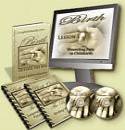Cord Blood Stem
Cell transplant
Rates & Probability
According to the National Marrow Donor Program (NMDP), cord blood stem cell transplant accounted for 20% of US transplants in 2008, which included both child and adult recipients. Two forms of stem cell transplants exist:
- Autologous transplants wherein the patient uses his/her own stem cells
- Allogeneic transplants wherein the patient receives donor stem cells
When cord blood is banked publicly, it may be used for unrelated allogeneic transplants; when banked privately, it may be used for autologous transplant or a related allogeneic transplant, usually to a close family member/sibling.
Limited research evidence exists on the probability of a person receiving an autologous umbilical cord blood transplant. The most recent work by Nietfeld et al. 2008 predicted the probability of a child, up to 20 years of age, receiving an autologous stem cell transplant to be 1 in 5,000 and increasing to 1 in 450 by age 70. However, this probability cannot be interpreted as that of receiving a cord blood transplant, as the paper addressed hematopoietic stem cell transplants (HSCT) which refers to blood-forming stem cells, such as those also found in bone marrow, not exclusively in cord blood. The most appropriate source of cells would need to be determined at the time of transplant.
Advantages of cord blood stem cell transplant are that it requires looser matching between the HLA tissue types of the donor and recipient. For a traditional bone marrow transplant, all 6 key antigens must match to prevent complications like graf-versus-host reaction (commonly called rejection). With a cord blood transplant, only 4 key antigens must match. The HLA tissue type is inherited from the child's parents making the likelihood a of sibling match on 6/6 antigens 25% and the likelihood of a 4/6 match 39%.
However, according to the NMDP, the cumulative total of all cord blood transplants from public banks in 2008 was 650 times the number from private banks, constituting unrelated allogeneic transplants. 40% of transplants occur from donors/recipients residing in different countries.
References
Nietfeld JJ, Pasquini MC, Logan BR, Verter F, Horowitz MM. Lifetime probabilities of hematopoietic stem cell transplantation in the US. Biol Blood Marrow Transplant. 2008;14:316-22.Fisk NM, Roberts IAG, Markwald R, Mironov V (2005) Can Routine Commercial Cord Blood Banking Be Scientifically and Ethically Justified? PLoS Med 2(2): e44 doi:10.1371/journal.pmed.0020044
Gluckman E, Rocha V, Boyer-Chammard A, et al. Outcome of cord blood transplantation from related and unrelated donors. New England Journal of Medicine. 1997;337:373-381
Return from Cord Blood Stem Cell Transplant to Cord Blood Banking
Return to Giving Birth Naturally Home
Page Last Modified by Catherine Beier, MS, CBE
Most Popular
How to Use Acupressure to Induce Labor
Childbirth Relaxation Script MP3s
Nutrition During Pregnancy - Nix the Notion of Eating for Two
Looking for a Birth Professional? Search our Provider Directory
Online Childbirth Classes
Choose 7 week, 12 week, or Self- Paced online childbirth classes available wherever and whenever you need them.
Featured Birth Story
Vanessa's natural birth story shows that when birth is left alone to proceed as it should, it waits for no one - not even doctors or midwives.
Free Pregnancy Tickers
Create a free pregnancy ticker to post on your blog, website, Facebook profile or favorite social media...




